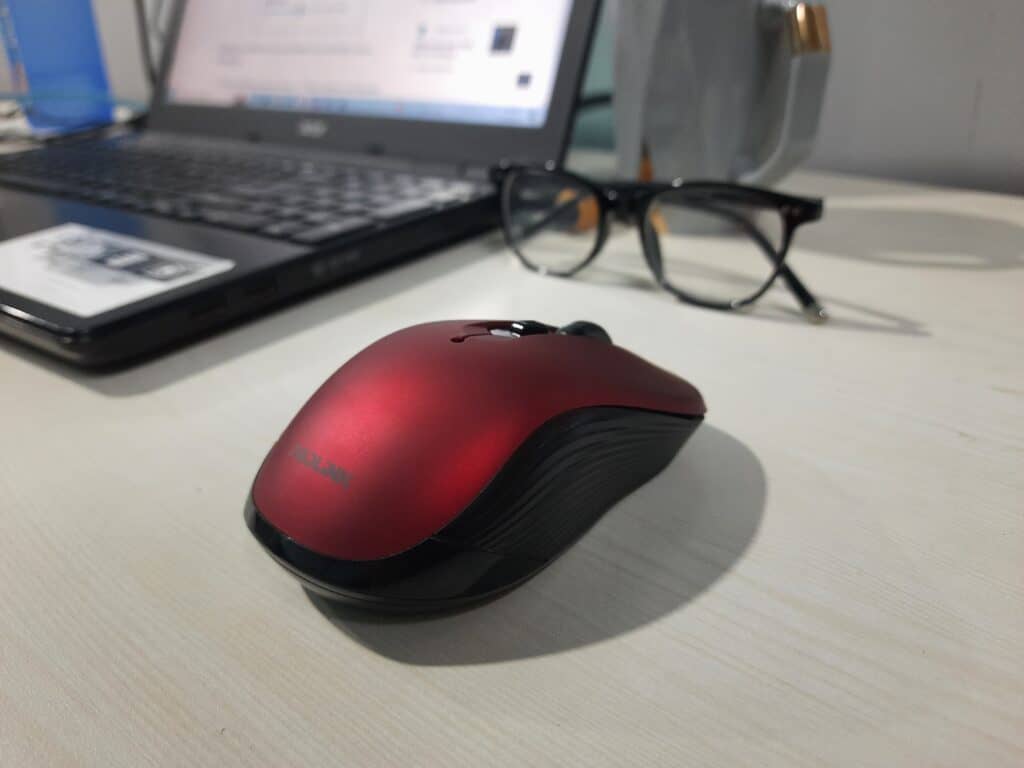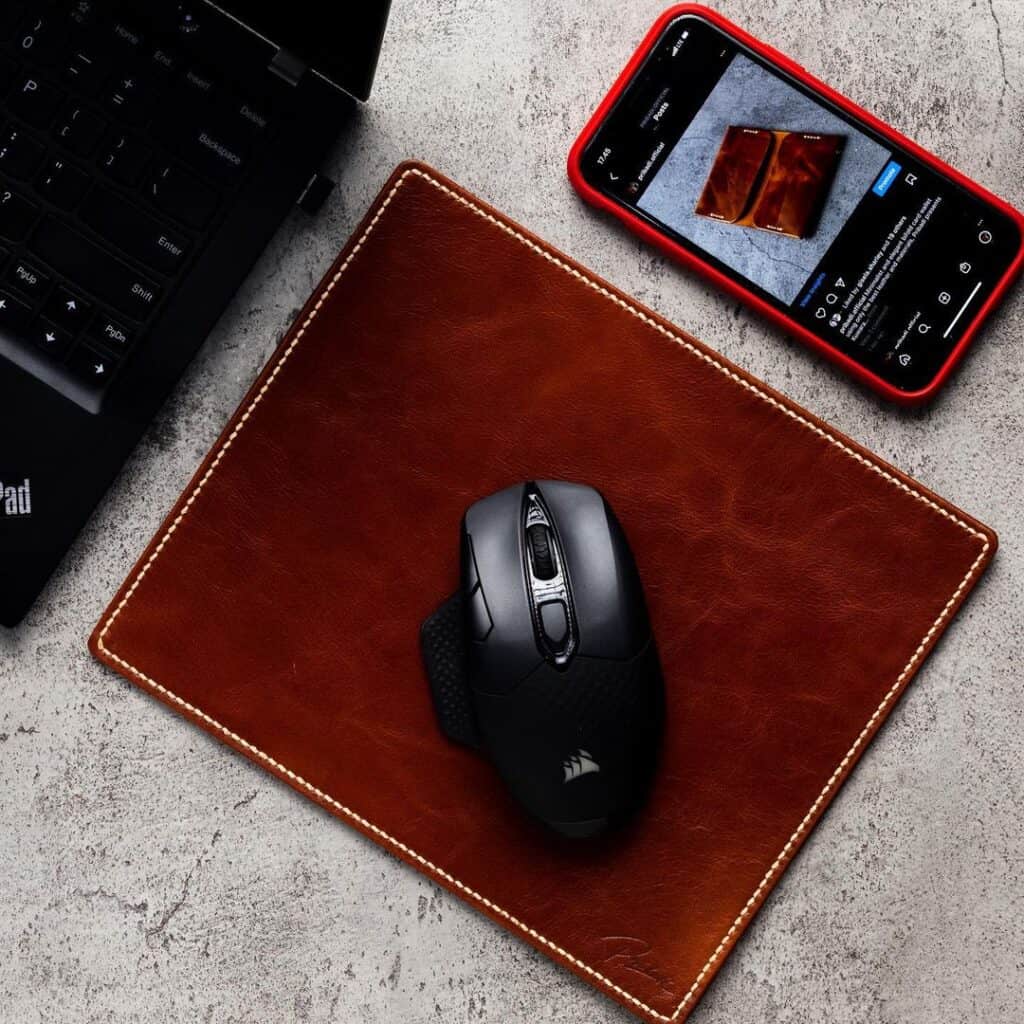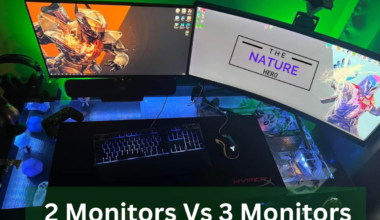Using a Mousepad is always better than not using one because it will significantly increase the usability of the device and your productivity.
However, what if you realize that you do not have a Mousepad and need one pronto?
Voila! You improvise and use the material at your disposal to create a makeshift Mousepad.
In addition, they are readily available in your home and cost relatively nothing. So yeah!
Remember, using the glossy surface for mousing is as good as moving your mouse in the air!
Read on to find out how to make an easy yet effective Mousepad alternatives with regular home or office materials.
Table of Contents Show
What Look for in a Makeshift Mousepad?
A Mousepad is a protective surface to keep under or between the mouse and the naked cover.
The makeshift surface should enhance the device’s usability and allow it to measure movement accurately and without jitter.
Otherwise, there is no point in using a makeshift Mousepad when it fails to perform its core function.
Therefore remember the following factors when choosing a makeshift Mousepad.
- It should be comfortable to use.
- It should effectively protect your desk.
- The surface should improve the required performance.
- It should prevent dirt and grime from sticking to the mouse.
- It should allow you to measure your movement (glide).
10 Easy and Best Makeshift Mousepads
Although the makeshift Mousepads are not exactly Mousepads, they will work great when you are in the nick of time!
Here is the list of the ten best and easy Mousepads alternatives.
Remember these makeshift Mousepads are only great for some activities or short periods.
1. Magazine
Magazines are among the most regularly found materials around the House and office.
Therefore, getting one as a makeshift Mousepad would not be complicated.
In fact, they work great as Mousepads because of their right thickness and dimensions to move the device around freely.
However, beware of using magazines with a glossy cover to prevent mice movement.
- Begin with finding a magazine with a non-glossy cover.
- Secondly, choose a magazine with wider dimensions, usually 8.5″ x 11″, the size of most magazines.
- You would need something firm on a solid surface; hence, always place the magazine above the ground or desk to prevent it from sinking.
2. Cardboard
Cardboards are the handiest material to make a makeshift Mousepad; most of you will have one at home.
It can be used on all types of surfaces and works great for any mice; rolling, tracking, etc.
Unlike magazines or paper, it does not have a paper-like texture but natural grain pattern that allows effective mouse movement.
You can cut the cardboard into any shape and size and use it as your preference.
Start with finding useless cardboard lying around and, using a scissor cut it into 8″ x 10″ dimensions or as required.
If the cardboard is not thick enough for the Mousepad, you can cut two similar pieces and glue them together to create a firmer base.
Check out a DIY process to make a reliable cardboard Mousepad.
3. Placemat/Table Mat
Placemats are thin table mats used to keep cutleries and utensils.
They are readily available in the kitchen and dining table, making them a pretty handy item for the makeshift Mousepad.
You can easily place them over glass, wood, metal, or plastic surfaces.
However, ensure that your placemat has a rough but glossy surface before using it.
Most table mats are designed with 12″ x 18″ dimensions, providing significant surface area for mice movement.
4. Newspaper
Many computer users would recommend using a newspaper as the first option for a makeshift Mousepad.
As the texture is already good enough for mice to work, you can move your mouse smoothly over the surface.
It is a readily available option for a Mousepad because you can quickly get your hands on a daily newspaper.
However, a single layer of paper may not be appropriate for a makeshift Mousepad. Consider making a thick fold of paper to create a firm surface.
5. Hardcover Book
A hardcover book would be the same as a hard Mousepad or desk surface.
It provides the required resistance, support, and friction to move the mouse.
Moreover, it is large and heavy enough to stay firm in one place and relatively cheap.
However, beware of using the glossy hardcover as it may not provide friction for mouse movement.
If you do not have a hardcover book at home or office, you can consider borrowing one from a friend or colleague.
6. Wooden Desk/Surface
If you have a wooden desk at home or office, you can consider using it as the Mousepad surface.
A wooden desk works excellently as a Mousepad alternative as it has the same texture and feels as the wooden Mousepad.
You can place the mouse directly on the desk and use its vast surface area.

However, using a hard surface as the Mousepad can induce palm, wrist, and shoulder pain in the long run.
Therefore, take frequent breaks and exercise your arm whenever possible to eliminate the risk of chronic pain.
7. Self-Healing Cutting Mat
If you have a self-healing cutting mat available in your office or home, you can take a bit to use it as a makeshift Mousepad.
The self-healing mats are designed to absorb the cut from a blade and are often in an industrial setting.
Moreover, it is made from many tiny particles that give it a slightly grainy surface to absorb the cuts.
Take a sharp knife to cut the mat in a rectangular shape of sizes 8″ x 10″ or more. You can keep it on any surface and use it as a quick makeshift Mousepad.
8. Leather Fabric
Leather is another handy material available in many homes that you can use as a makeshift Mousepad.
Most leather is synthetic, while some expensive kinds are made from animal hides or skins.
Either way, you can use it to create an effective mousing surface as it boasts small grainy particles efficient for movement.

However, cutting the leather product into shapes may not be a good idea when actively using it at home.
Just lay the material on the desk in an even fold and use it until you find a better alternative.
9. Wax Paper
Wax paper is often used as a Mousepad when there is no reliable material around it.
The waxed paper is moisture-proof through the wax, which gives it a perfectly smooth texture.
You often find it in semi-translucent form and mainly used to clean can openers, polish faucets, cabinets, etc.
Unroll the wax paper, cut a piece in sizes 8″ x 10″, and lay it over the desk to use as the Mousepad.
A single layer of wax paper would suffice, but do not forget to tape the edges on the desk to keep the wax paper in place.
However, consider replacing it with a new wax paper cut whenever it accumulates enough dirt and grime.
10. Sketchbook
A sketchbook would work the same as a newspaper for a makeshift Mousepad.
You will easily find it lying around your home if you are a sketching artist.
One side of the sketchbook paper is smooth, while the other is edgy. Always use the edgier side for the mousing surface.
Sketchbooks often come in significant sizes, offering maximum mousing surface area, especially for gaming.
However, it would wear out too quickly; therefore, consider replacing the paper every other day when used extensively.
Makeshift Mousepad Good for Gaming
Technically, you can use any makeshift Mousepad for a gaming mouse.
However, it would instead require a Mousepad with micro-texture that assists with the optical sensor of most gaming mice.
The suitable material will provide the feel and accuracy required for quick movement and assertive actions.
No matter what type of Mousepad you choose, it should feel comfortable and make your activity more efficient.
Start with choosing any of the above-mentioned Mousepad alternatives for gaming.
Check whether it feels right; otherwise, consider switching to another option.
Makeshift Mousepad for Optical and Rollerball Mouse
Generally, soft materials are considered excellent for roller ball mice, while hard materials are great for optical mice.
In addition, highly reflective and glass surfaces would not work well with optical mice due to a lack of tactile ability.
Soft materials such as newspaper, leather, self-healing cutting mat, and placemat would work great for rollerball mice.
You can use cardboard, sketchbooks, hardcover books, wax paper, and wooden surfaces for optimal mice.
What Surface to Avoid Using as the Makeshift Mousepad?
Remember, not all surfaces will work as the Mousepad alternatives.
A mouse requires a surface that offers enough traction to create friction, which is only possible with slightly granular materials.
Here is a list of a few materials inappropriate for a makeshift Mousepad.
| Materials | Disadvantage |
|---|---|
| Reflective Surface | The shiny surface will fail to provide the tactile response required for mousing activity. It affects the accuracy of the mouse. |
| Plastic | Shiny surface but not all plastic creates slippage whenever using the mouse. It easily attracts dirt and dust. |
| Glass | Glass is a glossy surface that quickly accumulates grime, dust, and dirt. The smooth material will also affect the tracking ability of the mouse. |
| Glossy surface | Glossy surface includes magazine cover, laminated material, and smooth table mat. It affects the tracking ability of most mice types. |
The Bottom Line
Choosing a suitable material is essential because a proper makeshift Mousepad reduces the fatigue you may feel after using the mouse.
You can use any of the materials mentioned above as a makeshift Mousepad.
However, ensure to cut it in a proper shape and apply multiple folds of the material to create a firm surface.
Let us know in the comments what material worked best for you as the Mousepad substitute.


